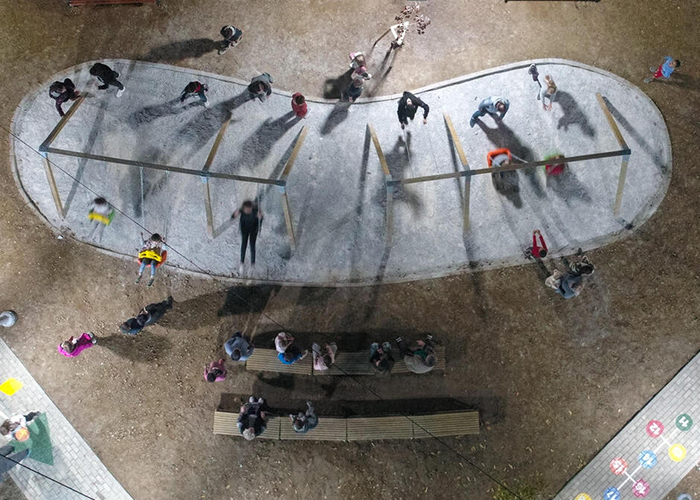12 Principles for an Effective Urban Response to Covid-19: UN-Habitat, the United Nations agency for human settlements and sustainable urban development, has developed 12 key principles to help local and national governments to prevent the spread of the virus and build preparedness for the future. The principles relate to accessibility, flexibility, design, management and maintenance, connectivity, and equitable distribution, and cover short, medium and long-term interventions. Read about them on ArchDaily. One in four cities cannot afford climate crisis protection measures: One in four cities around the world lack the money to protect themselves against climate breakdown, even though more than 90% are facing serious risks, according to research by the Carbon Disclosure Project. A survey of 800 cities found that 43%, representing a combined population of 400 million people, …
- Products
- New Releases
- All New Releases
- ChillOUT Tree
- Linea Bar Table
- Linea Bench
- Linea Bicycle Stand
- Linea Bin
- Linea Bollard
- Linea Cube
- Linea Curved Bench
- Linea Curved Lookout Table
- Linea Curved Seat
- Linea Long Communal Table
- Linea Lookout Bar Table
- Linea Lookout Table
- Linea Planter
- Linea Platform
- Linea Seat
- Linea Sun Lounge
- Linea Table
- Piatto Bar Stool
- Piatto Chair
- Piatto Coffee Table
- Piatto Love Seat
- Piatto Stool
- Piatto Table
- VT Bench
- VT Curved Bench
- VT Curved Seat
- VT Seat
- Seats
- Benches
- All Benches
- Aero Leaning Rail
- Aria Bench
- Cafe Stool
- Classic Galleria Bench
- Classic Galleria Slim Bench
- Classic Plaza Bench
- Classic Plaza Platform
- Linea Bench
- Linea Cube
- Linea Curved Bench
- Linea Platform
- Mall Bench
- Mall Curved Slim Bench
- Mall Platform
- Mall Slim Bench
- Park Bench
- Park Slim Bench
- Piatto Bar Stool
- Piatto Stool
- VT Bench
- VT Curved Bench
- Tables
- All Tables
- Aria Long Communal Table
- Aria Lookout Table
- Aria Table
- Cafe Table
- Classic Galleria Table
- Classic Plaza Platform
- Classic Plaza Table
- Linea Bar Table
- Linea Curved Lookout Table
- Linea Long Communal Table
- Linea Lookout Bar Table
- Linea Lookout Table
- Linea Platform
- Linea Table
- Mall Platform
- Mall Table
- Park Table
- Piatto Coffee Table
- Piatto Table
- Shade Structures
- Litter Solutions
- Bollards
- Drinking Fountains
- Bicycle Parking
- Planters and Tree Surrounds
- Parts and Accessories
- Colour Chart
- New Releases
- Projects
- Climate Action
- StreetChat
- About
- Contact



